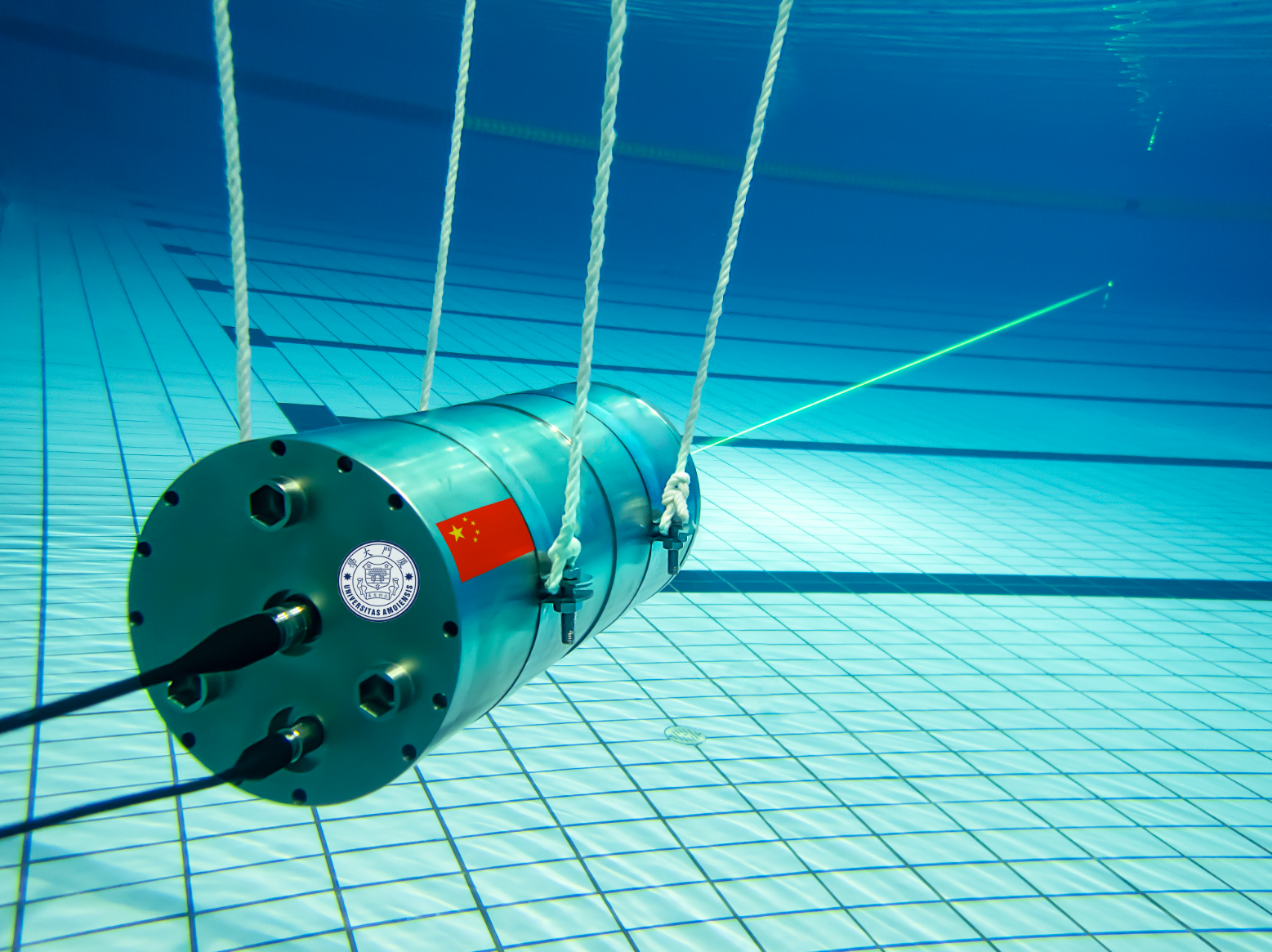Scientists have reported a new single-photon named Raman lidar system. It functions underwater and can remotely differentiate several substances.

Researchers developed a single-photon Raman lidar system that operates underwater and can remotely distinguish various substances They demonstrated the system by using it to detect varying thicknesses of gasoline oil in a quartz cell that was 12 meters away from the system in a large pool. Image Credit: Optica.
The team has also shown that the new system has the potential to detect the thickness of the oil underwater up to 12 m away, which can be beneficial for oil spills to be detected.
Differentiating substances in water and detecting their distribution characteristics in the ocean are is great significance for marine monitoring and scientific research. For instance, the remote sensing of underwater oil that we demonstrated could be useful for monitoring leaks in underwater oil pipelines.
Mingjia Shangguan, Research Team Leader, Xiamen University
Even though lidar methods based on Raman signals have been utilized earlier for the detection of underwater substances, current systems are impractical as they are heavy and require a huge amount of energy to power them.
In the Optica Publishing Group Journal Applied Optics, the scientists outline their new lidar system, which makes use of 22.4 mm of receiver aperture and just 1 μJ of pulse energy.
The complete lidar system is around 40 cm long with a diameter of 20 cm and can be operated up to 1 km underwater. To increase sensitivity, the scientists integrated single-photon detection into their small underwater Raman lidar system.
Mounting an underwater Raman lidar system on an autonomous underwater vehicle or remotely operated vehicle could enable monitoring for leaks in underwater oil pipelines. It could potentially also be used to explore oceanic resources or be applied in detecting seafloor sediment types, such as coral reefs.
Mingjia Shangguan, Research Team Leader, Xiamen University
Single-Photon Sensitivity in Underwater Lidar
Conventional lidar systems developed to function above the water on aircraft, ships, or satellites can achieve large-scale ocean profiling, but their detection depth is restricted, particularly under tough sea conditions. However, Raman lidar systems can be utilized for analysis underwater at various depths without being impacted by sea conditions.
Raman lidar works by emitting a pulse of green laser light into the water that interacts with substances such as oil.
This excites inelastic Raman signals that can be used to identify substances. Lidar can provide information about the oil content in the water by measuring the intensity of Raman signals at specific wavelengths.
Traditional Raman lidar systems rely on increasing laser power and telescope aperture to achieve remote sensing detection, which leads to a large system size and high-power consumption that make it difficult to integrate lidar systems onto underwater vehicles. The use of single-photon detection technology made this work possible by improving detection sensitivity to the level of single photons.
Mingjia Shangguan, Research Team Leader, Xiamen University
The scientists illustrated their new lidar system by using it to detect altering thicknesses of gasoline oil in a quartz cell that was around 12 m away from the system.
Both the quartz cell and lidar system were submerged at a depth of 0.6 m underwater in a large pool. The lidar system had the potential to detect and differentiate all thicknesses of gasoline, which varied from 1 mm to 15 mm.
Currently, scientists are attempting to increase the number of detection channels and the Raman spectral resolution of the single-photon lidar system to improve its potential to differentiate various substances in water. This would enable it to examine underwater bubble types and detect corals and manganese nodules.
Journal Reference:
Shangguan, M., et al. (2023) Remote sensing oil in water with an all-fiber underwater single-photon Raman lidar. Applied Optics. doi.org/10.1364/AO.488872.